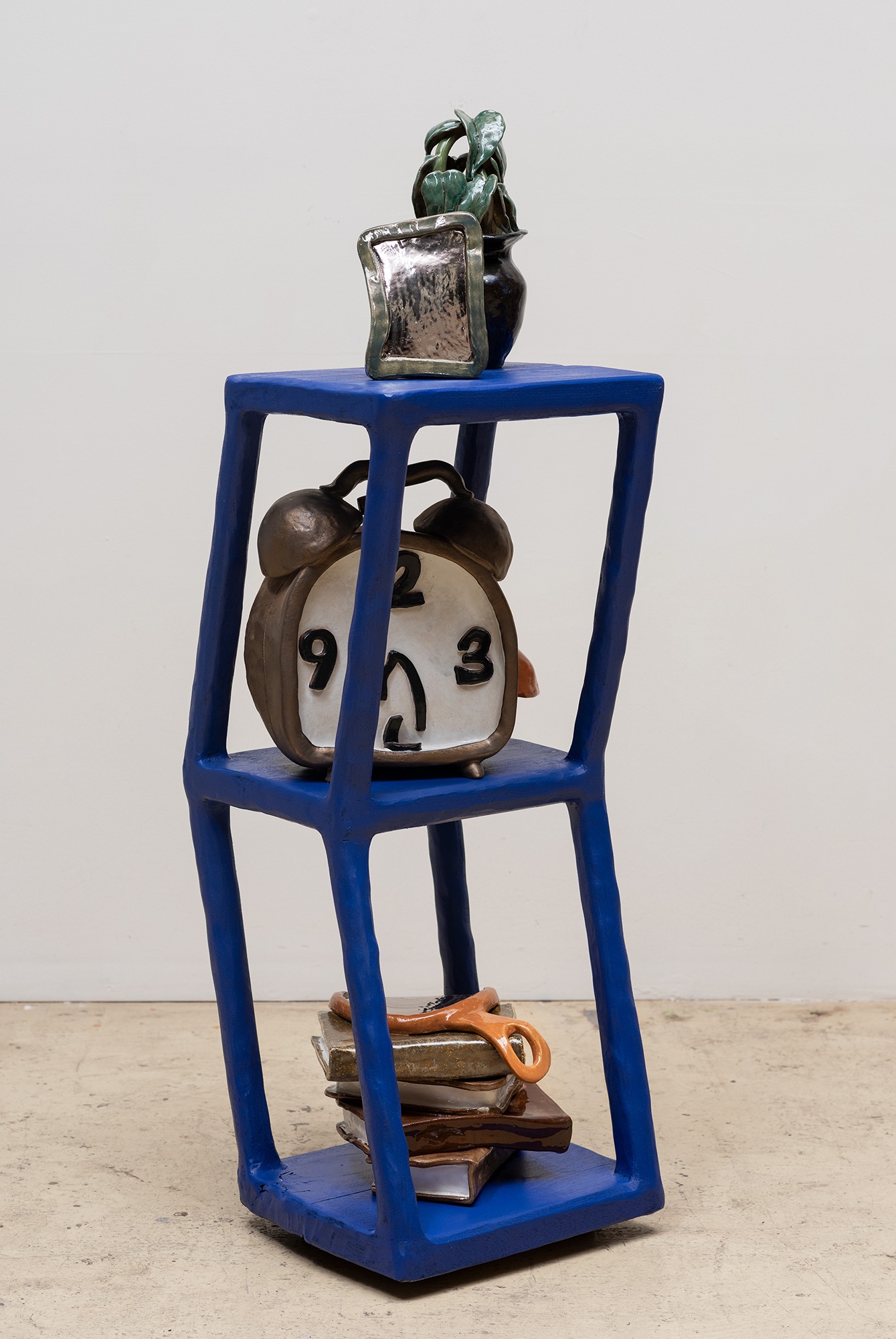Woody De Othello is best known for playful ceramics, such as those associated with Northern California’s so-called Funk art of the late 1960s and early ’70s. An artist who foregrounds material experimentation and process, Othello features anthropomorphized domestic objects—clocks, phones, television remotes, and air conditioners—imbued with human emotions in his sculptures. According to the artist, the “objects mimic actions that humans perform.”
Othello’s tomorrow always never is features an assemblage of several objects that recur throughout his sculptural practice, including scaled up versions of a twin bell alarm clock, a push-button telephone, a houseplant, a picture frame, a stack of books, and a handheld mirror. The objects are staged on a bright blue shelving unit that appears to bend precariously under the weight it bears. Modeled in Othello’s signature form of cartoonish figuration, each densely glazed ceramic object is slumped over and losing its shape, as if exhausted or melting. This humorous approach to representation expresses varying emotional and psychological states. At the center of the sculpture there is a drooping orange telephone and an alarm clock with wilting hands—instruments of communication and time that possess a degree of nostalgia, a sense of time slipping away. Othello’s tactile ceramic constructions convey a sense of vulnerability, which is particular to the medium but also to the way that these objects appear to be, as the artist describes them, “affected with the same type of spirit and energy as a figure.”
